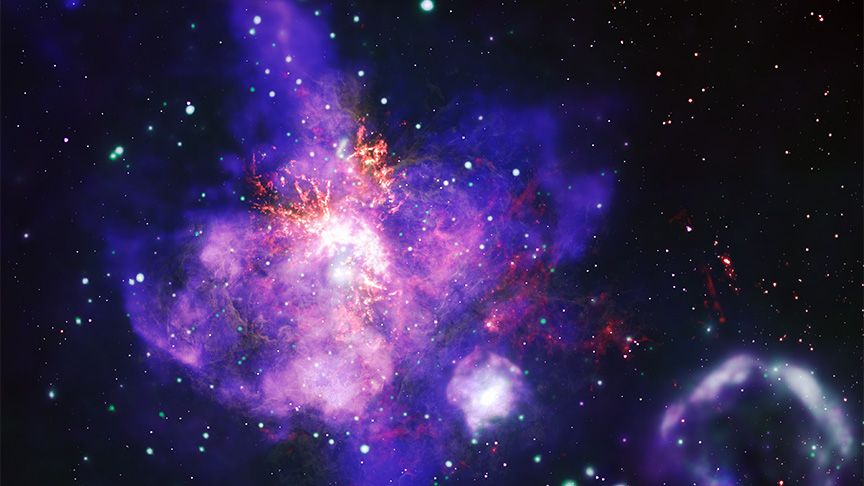
This stunning image, captured by NASA’s Chandra X-ray Observatory, showcases the intricate petals of a cosmic flower—presenting the most detailed X-ray visualization to date of the magnificent star-forming nebula known as 30 Doradus, situated in the Large Magellanic Cloud.
The four blue petals illustrated in this image signify hot gas energized by radiation winds from young, hot stars, as well as the outward cries of these stars’ deaths, manifested in supernova explosions occurring millions of years later.
While 30 Doradus may seem primarily focused on star formation, it encapsulates the entire lifecycle of the most massive stars, which typically have brief life spans. In many ways, the regions where these stars are born also serve as their final resting places. Notably, the recent supernova that was visible to the naked eye, SN 1987A, erupted on the outskirts of 30 Doradus, contributing to this magnificent cosmic flower’s formation from the remnants of deceased stars.
The X-ray emissions captured by Chandra are depicted here in blue and green hues—representing false colors that showcase X-rays invisible to human vision. This imaging is the most profound X-ray examination of 30 Doradus yet; Chandra’s previous observations amounted to approximately 1.3 days, whereas this new image accounts for an impressive 23 days of data collection. Within the diffuse gas, Chandra detected 3,615 specific X-ray sources, including remnants of supernovae, binary systems featuring neutron stars or stellar-mass black holes, X-ray pulsars, young T Tauri stars, and massive stars in binary configurations. The lengthy exposure period allowed scientists to observe some of these X-ray sources varying over time, influenced by processes such as the orbital mechanics of binary systems.
Alongside this, radio data from the Atacama Large Millimeter/submillimeter Array (ALMA) in Chile illustrates filaments of dust in orange (also in false color), while optical data from the Hubble Space Telescope is represented in yellow. Throughout its 35 years in space, Hubble has imaged 30 Doradus multiple times, giving rise to its nickname, the Tarantula Nebula, due to its resemblance to a spider when viewed in visible light.
Nestled within the Large Magellanic Cloud—our Milky Way’s satellite galaxy approximately 160,000 light-years away—30 Doradus spans an impressive 650 light-years in diameter. It represents one of the universe’s most vigorous star-forming regions and is notably the largest in the Local Group of galaxies, which includes the Andromeda and Triangulum spiral galaxies. Its immense size can be attributed to the absence of the differential rotation found in spiral galaxies, allowing gas clouds to coalesce without fragmentation. Consequently, it has become a prolific site for creating the most massive stars.

Within 30 Doradus lies a massive young star cluster designated NGC 2070. Within this cluster is an even denser concentration of stars, known as R136. At the heart of R136 resides the most enormous star identified in the universe, R136a1. This star is classified as a Wolf–Rayet star—known for their instability and tendency to shed material in violent bursts. Currently, R136a1 boasts a mass approximately 200 times that of our sun, though at the time of its formation just over a million years ago, its mass was around 325 times that of our sun, having lost a portion over its lifetime.
If you are interested in understanding more about the creation of this remarkable image and the scientific insights it provides, you can access the detailed study published in July 2024 in The Astrophysical Journal Supplement Series.









